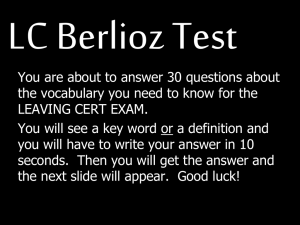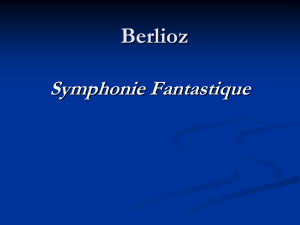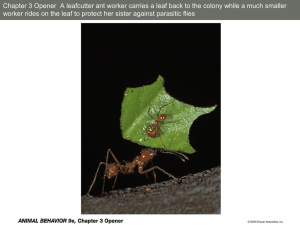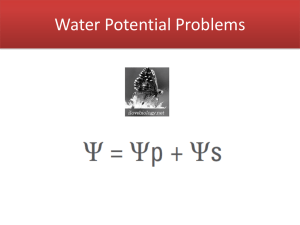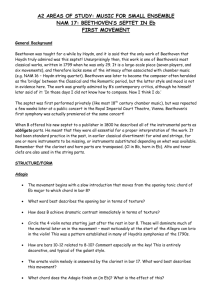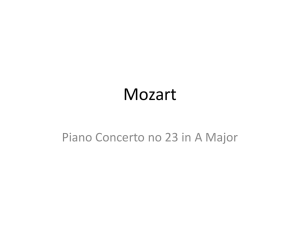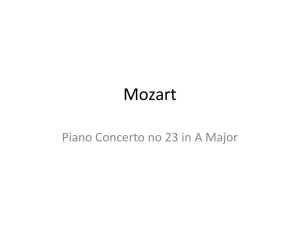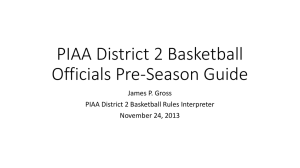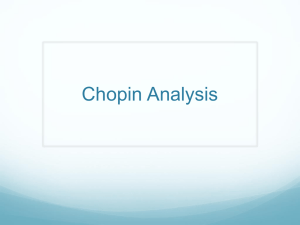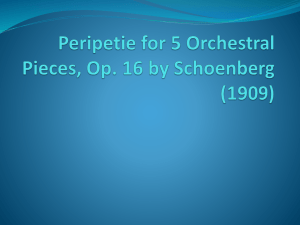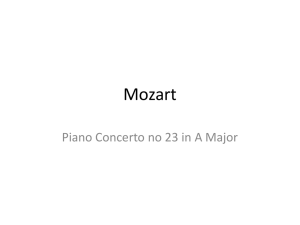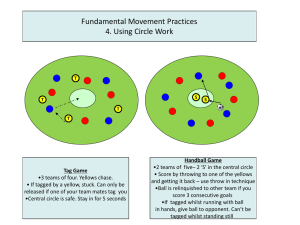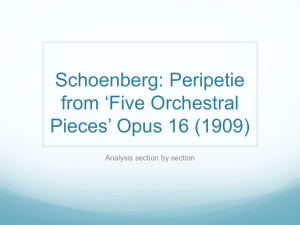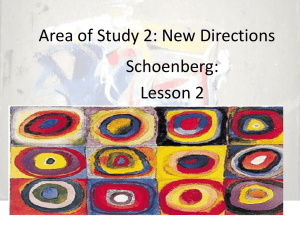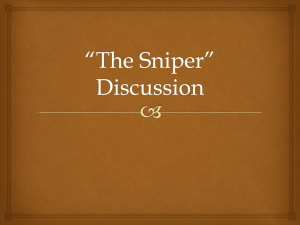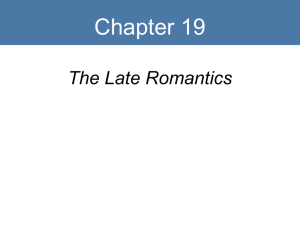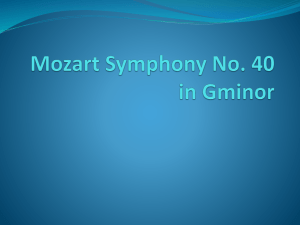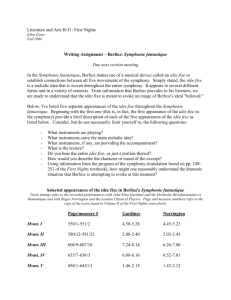Symphony Fantastique Analysis
advertisement
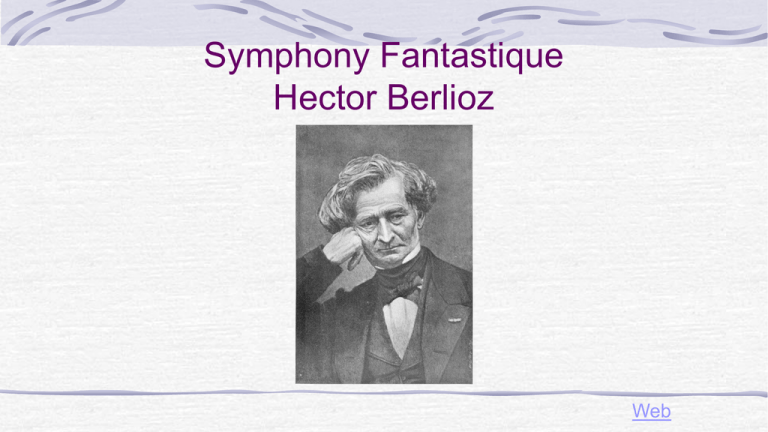
Symphony Fantastique Hector Berlioz Web The Romantic Period Paris became the most important city for Romantic music In Romantic music fantasy and expression are more important than balance and symmetry of Classical period The composers of the Romantic period sought to create Drama Describe an emotion Paint a scene Romantic Style Texture – changed quickly from section to section Melody – long expansive melody which include unusual modulations Instruments – Orchestras became much bigger Form – Usual forms were in use but were extended Features – Included wide ranges, modulation to non-related keys, the use of leitmotiv – a recurring theme Berlioz’s Style Features: • Master of orchestration • Would often combine main themes together • Provided clear musical markings for performance • Melodies very expressive Symphony Fantastique Symphony in 5 movements with a recurring theme Idee Fixe Berlioz distributed programme notes to the audience We study movement II and IV Movement II is The Ball Movement IV is The March to the Scaffold Second Movement The Ball – Basic Details Ternary Form ABA1 Allegro non Troppo Lively but not too much Accompaniments A Major 3/8 Time Changing Orchestration with theme changes Waltz Theme Introduction and Coda Second Movement Un Ball – A Section Theme Key Bar 1A A Major 36 1B A Major 54 1C A Major 66 1A A Major 94 Second Movement Un Ball – A Section – 1A Bars 36-54 – A Major – 16 bar melody on 1st violin Second Movement Un Ball – A Section – 1B Bar 56-66 – A Major – 11 bars on 1st violin accompanied by strings and harp Second Movement Un Ball – A Section – 1C Bars 66 – 93 – A Major 10 bar melody on violin accompanied by viola and cello (2 Phrases) Second Movement Un Ball – A Section – 1A Bars 94-120 16 bars extended on 1st violin with orchestral accompanied – A Major – F Major No upbeat No slow down in bar 104 Theme extended by 11 bars Modulation to F Major Second Movement Un Ball – B Section – Idee Fixe Bars 121- 175 – Idee Fixe on 1st Flute and Oboe Transition from F Major to A Major Second Movement Un Ball – A1 Section – 176-256 Theme Key Bar 1a – No lead in 1b – 2 harps A Major 176 1c A Major 203 1a - Extended A Major 233 Link and Coda Bars 257 – 301 Coda – Bars 302 – 368 Bar 302 – 18 bars 1st clarinet Idee Fixe
